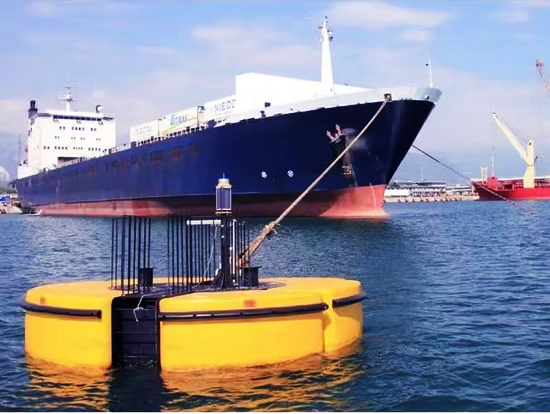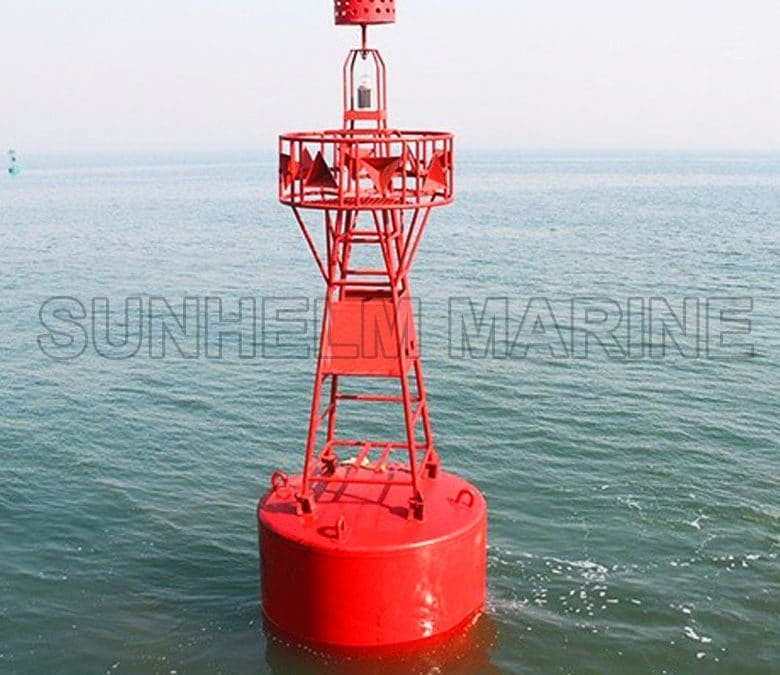Ever been out on the water, the sun glinting off the waves, and spotted a colorful buoy bobbing in the distance? Perhaps you’ve wondered what it signifies. Alternatively, you might have even felt a moment of uncertainty about which way to steer. For anyone who spends time on the water, from seasoned sailors to weekend anglers, understanding these seemingly simple floating markers is crucial. They’re more than just pretty decorations; they’re the silent sentinels of the seas, guiding us safely through complex waterways.

Why is understanding marine buoys not just important, but urgent? Imagine this scenario: You’re enjoying a beautiful day on the lake, perhaps exploring a new cove. Suddenly, the weather takes an unexpected turn. A squall rolls in, and visibility drops. Consequently, the familiar shoreline disappears. Without a clear understanding of the navigational buoys, you could easily find yourself in shallow water, a restricted zone, or even on a collision course with another vessel.
Consider a commercial fishing boat navigating a busy shipping lane at night. Without the precise guidance offered by various buoys, the risk of grounding or a serious accident skyrockets. These are not hypothetical situations; rather, they underscore the immediate and vital need for every boater to be fluent in the language of marine buoys.
Decoding the Silent Sentinels: What You Need to Know
Marine buoys are essentially floating signs. They convey critical information to mariners. Furthermore, they come in various shapes, sizes, and colors, each with a specific meaning. Ignoring or misinterpreting them can lead to dangerous situations, including running aground or entering prohibited areas. At Sunhelm, we believe that informed boaters are safe boaters. Therefore, we’ve put together this essential guide.
The IALA System: Your Global Buoy Compass
The International Association of Lighthouse Authorities (IALA) has standardized buoyage systems worldwide. This standardization makes it easier for mariners to navigate across different regions. There are two main IALA systems: System A (Red to Port) and System B (Red to Starboard). Most of the Americas, including the United States, use IALA System B. Knowing which system applies to your cruising grounds is fundamental for safe navigation.
Lateral Buoys: Keeping You in the Channel
Lateral buoys mark the edges of safe channels. Importantly, they also indicate which side of the buoy you should pass.
- Red Buoys (Nun Buoys): In IALA System B, red buoys mark the right side of the channel when returning from sea (upstream). These are typically cylindrical or “nun” shaped. Additionally, they will have even numbers. “Red, Right, Returning” is a classic mnemonic to help you remember this.
- Green Buoys (Can Buoys): Green buoys, often “can” shaped, mark the left side of the channel when returning from sea (upstream). Moreover, they will have odd numbers.
Non-Lateral Buoys: More Than Just Channel Markers
Beyond guiding you through channels, buoys serve a variety of other crucial purposes.
Safe Water Buoys
These buoys are typically red and white with vertical stripes. They are often spherical or pillar-shaped. Their purpose is to indicate that there is safe, navigable water all around them. Consequently, you’ll generally find them marking fairways or mid-channels.
Isolated Danger Buoys
These buoys are black with one or more red horizontal bands. They mark an isolated danger, such as a submerged rock or wreck. However, they also signify that navigable water exists all around the hazard. They are typically pillar or spar-shaped.
Special Mark Buoys
Special marks are yellow buoys of various shapes. They indicate a special area or feature, the nature of which is described on charts or in sailing directions. This could include a designated anchorage, a cable crossing, a traffic separation scheme, or an outfall pipe. Therefore, always consult your charts when encountering these.
Cardinal Buoys
These distinctive buoys are black and yellow. They indicate the direction of safe water relative to the buoy. Their top marks (two black cones) and the arrangement of their colors tell you whether to pass North, East, South, or West of them. Understanding cardinal marks is vital, especially for navigating complex areas with hidden dangers.
Lights and Sounds: Buoys Working Overnight
Many buoys are equipped with lights. Some also have sound signals. This is particularly true in busy or challenging waters, where they aid navigation at night or in low visibility.
Light Characteristics
The color, rhythm, and sequence of a buoy’s light (e.g., flashing, occulting, quick flashing) are all coded on nautical charts. These characteristics provide unique identification for each buoy. Learning to read them is therefore essential for night navigation.
Sound Signals
Fog bells, gongs, or whistles on buoys provide audible warnings. This is particularly useful in dense fog or other conditions of restricted visibility, enhancing safety when visual cues are limited.
Staying informed about the meaning of different buoys is not just about avoiding accidents. Ultimately, it’s about maximizing your enjoyment and confidence on the water. At Sunhelm, we’re committed to providing the resources and equipment that empower you to navigate safely and efficiently, every time you cast off.
Related Questions (People Also Ask):
Q1: What are the main types of marine buoys?
A1: The main types of marine buoys include lateral buoys (red and green, marking channels), safe water buoys (red and white, indicating safe navigable water), isolated danger buoys (black and red, marking hazards), special mark buoys (yellow, for specific areas), and cardinal buoys (black and yellow, indicating safe water direction).
Q2: What is the difference between IALA System A and System B?
A2: The primary difference lies in the color of lateral buoys. In IALA System A, red buoys mark the port (left) side of the channel when returning from sea, while green buoys mark the starboard (right) side. In IALA System B (used in the Americas), red buoys mark the starboard (right) side, and green buoys mark the port (left) side. The mnemonic “Red, Right, Returning” applies to System B.
Q3: How do I know if a buoy is marking a hazard or a safe channel?
A3: The color, shape, and top mark of a buoy are key indicators. Red and green lateral buoys mark channels. Conversely, black and red banded buoys (isolated danger marks) indicate a hazard. Safe water buoys are red and white, vertically striped. Understanding the IALA system and consulting your nautical charts are essential for accurate interpretation.
Q4: Do all marine buoys have lights?
A4: No, not all marine buoys have lights. Buoys in busy waterways, those marking critical channels, or those in areas with high traffic density are more likely to be lit, especially for night navigation. Their light characteristics are always indicated on nautical charts.
Q5: Where can I learn more about specific buoyage in my area?
A5: Your best resources are official nautical charts for your region, which depict all navigational aids and their characteristics. Additionally, publications like the U.S. Coast Guard Light List or equivalent national navigational guides provide detailed information on buoys, lights, and other aids to navigation. Furthermore, many boating safety courses cover buoyage systems extensively.


